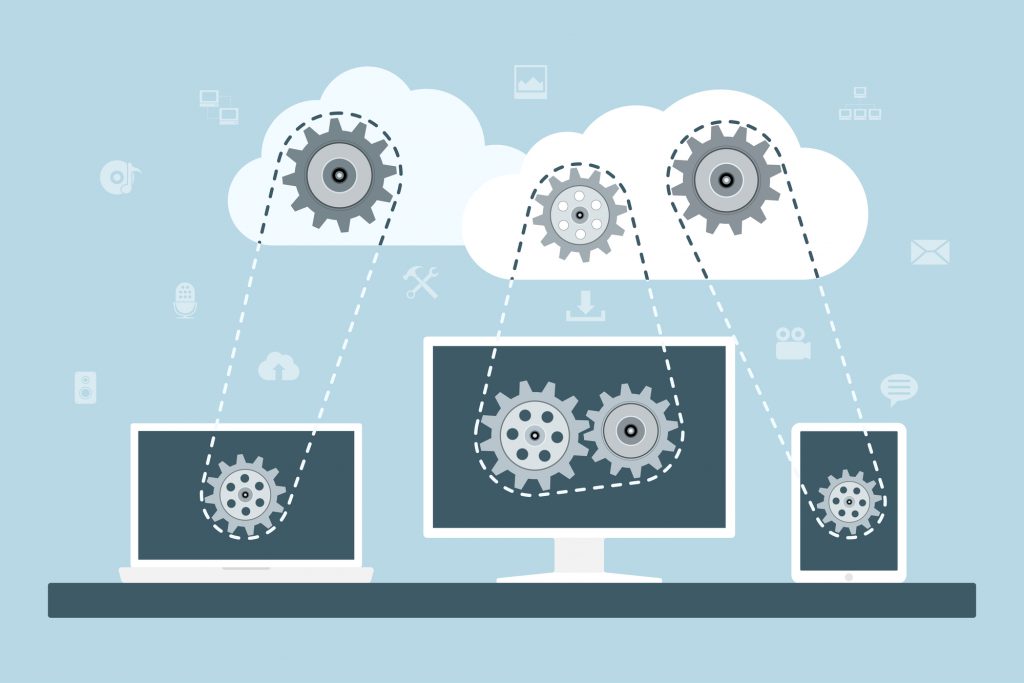5 simple steps to successfully migrate your workloads to the cloud
Digitalisation is increasingly more present in companies with foresight, and one of the main characteristics is a firm commitment to Cloud Computing work environments. Correctly migrating services from client-server environments to the cloud is a process that should be carried out with great precision, so companies should rely on the appropriate technology, as well as on expert consultants that follow a proven methodology. In this sense, carrying out this process with Google Cloud technology and advice from Intelligence Partner is a guarantee of success.

In everyday language, the expression “to be in the clouds” has always been synonymous with being distracted or oblivious, being out of touch with reality. However, its meaning changes if we are referring to Information Technologies for companies: it equates to relying on an environment that guarantees business success, enables new business opportunities to be discovered, reduces infrastructure costs, encourages collaborative working and speeds up the ability to respond to business challenges.
With these advantages, more and more companies are moving to the cloud. Successfully taking the leap to this cloud environment involves a transformation: new skills, new tools or the migration of existing ones to this new environment, under new rules and processes.
In this post, we explain how to carry out the successful and swift migration of your workloads (applications or services) to a cloud environment like Google Cloud Platform thanks to a simple, fast and effective procedure.
5 steps to migrate workloads to Google Cloud Platform
To take the step to the cloud, we start by choosing which platform is the one we want to select to be our work environment and what we want to start to upload to this environment. In other words, the tool we are going to use and the service, that we are going to know as workload.
In this context, the steps that should be followed to successfully carry out the migration to the cloud of the workloads are:
- Selection of the platform on the cloud. There are different cloud environments on the market, but at Intelligence Partner, we recommend Google Cloud Platform. Our experience and knowledge have shown us that it is one of the best cloud platforms for companies, since it brings together high capacity technology, ease of use and high security. Furthermore, Google Cloud Platform has the least lock-in of the market making it equally easy to leave.
- Identification of the service or application. Once the appropriate cloud platform has been chosen (in our case, Google Cloud Platform), it’s time to choose the application or service we want to migrate to the cloud or modernise within the existing environment. This selection process should be carried out jointly by the company and the team of consultants who will analyse each application or service and will establish an order of migration according to criticality.
- Cloud adoption model. The identification of applications and services that will be transferred to the cloud leads to the next phase, where the cloud adoption model is chosen. In the case of Google Cloud Platform, there is a set of improved practices called Cloud Foundation (access to webinar) which helps to define the model of implementation that is going to be created (for example, hybrid or pure). It offers recommendations for a basic technical configuration, providing the environment with networks, connectivity, billing, IAM and security.
The “Discovery” tools offered by Google Cloud Platform are also important, which use API REST to discover resources (for example, GC disks, images, projects, accounts, configuration of virtual machines, etc. and the relationships established between them). The findings or results delivered by these tools display the status and configuration of the cloud environment based on Google Cloud.
- Implementation. Once the application and service have been identified and the cloud model has been chosen, it’s time to carry out the real migration process. This step entails the deployment of the selected application or service on Google Cloud Platform. In this context, migration tools like Google Compute Engine are extremely useful, an Iaas (Infrastructure as a Service) component of this platform which enables virtual machines to be created and launched in Google’s infrastructure.
- Definition of the transformation plan. No less important than the migration/implementation is the study and definition of a transformation plan of the application/service, and how to implement and optimise the solution on Google Cloud Platform adopting a Cloud model based on SaaS services or in container-based infrastructures. Google offers a model of methodology that helps with decision-making when it comes to being able to migrate or transform an application or service.
Transferring both your information and your business tools can be carried out successfully and simply. The only secret is relying on the appropriate technology, a proven methodology and an expert consultant. At Intelligence Partner, we offer you the best combination: Google Cloud Platform technology, a methodology based on our experience and our specialist technicians.
Together we will analyse your current situation and your objectives and we will outline the best way of uploading to the cloud, defining an adapted plan and making recommendations to optimise the future working of your work environment on the cloud. Bear in mind that we are a Premium Partner of Google Cloud.
Choose your first workload and we help you to upload it to Google Cloud Platform. We analyse it and offer you the best approach possible to modernise it, adopting a native cloud model relying on serverless services, of containerization like Docker or Kubernetes or the other PaaS, SaaS or laaS services from Google. The result is an application or service which is 100% operational onGoogle Cloud Platform.
Are you interested in taking a leap onto the cloud? If so, you just need to take the first step: contact us without any obligation.


